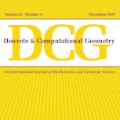An obstacle representation of a graph $G$ consists of a set of polygonal obstacles and a drawing of $G$ as a visibility graph with respect to the obstacles: vertices are mapped to points and edges to straight-line segments such that each edge avoids all obstacles whereas each non-edge intersects at least one obstacle. Obstacle representations have been investigated quite intensely over the last few years. Here we focus on outside-obstacle representations (OORs) that use only one obstacle in the outer face of the drawing. It is known that every outerplanar graph admits such a representation [Alpert, Koch, Laison; DCG 2010]. We strengthen this result by showing that every (partial) 2-tree has an OOR. We also consider restricted versions of OORs where the vertices of the graph lie on a convex polygon or a regular polygon. We characterize when the complement of a tree and when a complete graph minus a simple cycle admits a convex OOR. We construct regular OORs for all (partial) outerpaths, cactus graphs, and grids.
翻译:图形 $G$ 的障碍表示方式由一组多边形障碍和一张$G$的绘图组成,作为有关障碍的可见度图表:将脊椎绘制成点和边缘以至直线段,以便每个边缘都避免所有障碍,而每个非边缘的交叉点至少要有一个障碍。在过去几年里,对障碍表示方式进行了非常深入的调查。我们在这里集中关注在绘图外表面仅使用一个障碍的外部镜表(OORs),已知每个外平面图都接受这样的表示方式[Alpert, Koch, Laison; DCG 2010]。我们通过显示每个(部分) 2 树都有OOR 来强化这一结果。 我们还考虑对OORs 的限制性版本, 图形的脊椎部位于一个等离子多边形或普通多边形上。 我们确定树的补码是什么时候, 而一个完整的图形减去一个简单的圆形, 我们为所有(部分) 外向外径、 cactus 图形和网格) 建立常规OORs。



